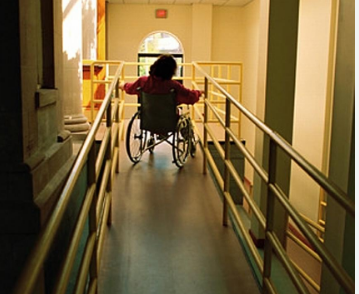For a child patient, navigating a world designed for adults can be a daunting experience. Hospitals, clinics, and even their own homes might present obstacles like curbs, steps, and raised doorways. This is where ramps come in, acting as bridges that empower little patients to navigate their environment more freely and independently.
This article explores the five best types of ramps for child patients, helping you choose the perfect solution to promote their mobility and confidence:
1. Handy Ramps: Champions of Everyday Accessibility
- Perfect for: Overcoming small obstacles like thresholds, doorways, or raised landings in hospitals, treatment centers, or even at home.
- Benefits:
- Enhanced Independence: Enables children to navigate short distances more freely, boosting confidence and self-esteem.
- Reduced Strain: Eliminates the need to lift or carry a child over obstacles, protecting caregivers from physical strain.
- Safety First: Minimizes the risk of falls and accidents associated with attempting to overcome obstacles without assistance.
- Handy Ramp Options: Consider lightweight, portable ramps or threshold ramps made from durable, slip-resistant materials. Look for vibrant colors or playful designs to make the ramp more inviting for children.
2. Modular Ramps: Building Pathways to Independence
- Perfect for: Spanning larger gaps or inclines, such as entrances to public buildings, therapy centers, or overcoming uneven terrain at home.
- Benefits:
- Customization: Modular ramps come in interlocking sections, allowing for adjustments in length and incline to fit specific needs.
- Scalability: As a child grows, additional modules can be added to the ramp for continued accessibility.
- Sturdy and Safe: Modular ramps are typically made from strong materials like aluminum, ensuring safe and reliable use.
- Considerations: Choose lightweight, easy-to-assemble modules with child-friendly handrails for added security.
3. Wheelchair Ramps: Empowering Exploration
- Perfect for: Children who use wheelchairs for mobility, allowing them to access various areas within hospitals, clinics, and public spaces.
- Benefits:
- Increased Independence: Provides children with the freedom to navigate their surroundings independently, fostering exploration and participation.
- Safety and Comfort: Well-designed wheelchair ramps ensure safe and comfortable movement for children using wheelchairs.
- Important Features: Look for ramps with a gentle incline that complies with safety regulations, wide enough for easy maneuvering, and slip-resistant surfaces. Consider ramps with built-in handrails for added security.
4. Play Ramps: Transforming Therapy into Fun
- Perfect for: Physical therapy sessions, encouraging children to engage in activities that improve balance, coordination, and muscle strength.
- Benefits:
- Therapeutic Play: Play ramps can be incorporated into therapy sessions, making them more engaging and enjoyable for children.
- Motor Skill Development: Encourages children to climb, crawl, and roll, promoting the development of gross motor skills.
- Play Ramp Options: Choose brightly colored, lightweight ramps with varying slopes and textures for added sensory stimulation. Look for ramps designed for indoor or outdoor use, depending on therapy needs.
5. Portable Ramps: On-the-Go Accessibility
- Perfect for: Temporary use during clinic visits, doctor appointments, or outings, ensuring children can navigate unfamiliar environments with ease.
- Benefits:
- Versatility: Lightweight and foldable, portable ramps offer convenient accessibility on the go.
- Easy Transport: Compact size and portability allow for effortless transportation in vehicles or storage when not in use.
- Choosing the Right Ramp: Select a portable ramp with a weight capacity suitable for the child and a sturdy, non-slip surface. Consider ramps with handles for added stability and ease of use.
Beyond the Ramp: Building a Supportive Environment
While ramps are essential tools for promoting accessibility, here are some additional ways to create a supportive environment for child patients:
- Incorporate Child-Sized Furniture: Providing furniture at their height allows children to reach for toys, climb on chairs, and engage in activities more independently.
- Clear Communication and Reassurance: Use simple language and explain procedures in a way children can understand to reduce anxiety and promote cooperation.
- Embrace Playful Decor: Decorate treatment areas with familiar and colorful themes to create a more inviting and comfortable space.
Conclusion
By choosing the right type of ramp and fostering an inclusive environment, we can empower child patients to navigate their healthcare journey with greater independence, confidence, and a sense of fun. After all, every step towards accessibility is a giant leap for a little adventurer!
